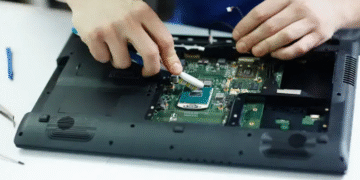Surveying is the backbone of accurate land development, construction, and infrastructure projects. Whether you’re mapping out a new property boundary or preparing for a large-scale build, having the right tools makes all the difference. In today’s fast-evolving industry, precision and reliability are non-negotiable—and that’s where top-tier surveying equipment comes in.
Why Precision Matters in Surveying
In any project involving land measurement or planning, even a small error in data collection can lead to costly consequences. A misplaced boundary line, incorrect elevation, or inaccurate angle can compromise the structural integrity of a building or lead to disputes over property lines. That’s why professionals rely on tools designed to deliver pinpoint accuracy.
Surveying is not just about measuring distance—it’s about capturing data that reflects the real-world terrain with high fidelity. From construction sites and civil engineering projects to environmental studies and road planning, accurate measurements are the foundation of safe and successful outcomes.
Core Categories of Surveying Equipment
Modern surveying involves a combination of traditional instruments and high-tech gear. Each tool plays a distinct role in data collection, mapping, and analysis. Understanding what’s available—and how it’s used—helps ensure you’re equipped for any job.
Total Stations
These all-in-one instruments are a staple for professional surveyors. A total station combines the functions of a theodolite with an electronic distance measurement (EDM) system. The result is a powerful device capable of measuring angles and distances simultaneously, with digital data output for seamless integration into processing systems.
Surveyors use total stations for tasks such as topographic surveys, layout of construction sites, and checking alignment. What sets them apart is their precision and versatility in both horizontal and vertical data collection.
GNSS/GPS Receivers
For larger or remote areas where traditional line-of-sight instruments are impractical, GNSS (Global Navigation Satellite System) receivers provide a reliable alternative. These devices tap into satellite signals to determine accurate positioning coordinates on the Earth’s surface.
Modern GNSS receivers are a staple in the arsenal of those working on land development and large infrastructure projects. They’re particularly effective in open terrains and offer real-time kinematic (RTK) capabilities for centimetre-level precision.
Laser Levels and Digital Levels
When it comes to ensuring level surfaces or measuring vertical differences, laser and digital levels are used. These tools are ideal for construction grading, drainage planning, and other applications requiring elevation control.
Laser levels project a visible line across surfaces, allowing for quick alignment and slope verification. Digital levels, on the other hand, provide precise elevation readings and can store measurements electronically.
Theodolites
A more traditional but still widely used tool, the theodolite is designed to measure both horizontal and vertical angles. It’s especially valuable in boundary surveys, road design, and structural engineering.
Though total stations have largely absorbed their function, theodolites remain a viable option when simplicity and ruggedness are required.
What to Look for in the Best Surveying Equipment
Choosing the best surveying equipment depends mainly on the nature of the job. However, several standard features define top-performing tools across all categories.
Accuracy and Reliability
This is the non-negotiable trait of any surveying tool. Whether it’s a GPS receiver or a digital level, your equipment must consistently provide accurate readings under various environmental conditions.
Durability
Surveying often takes place in challenging environments like remote fields, muddy construction zones, or scorching deserts. The best equipment is designed to withstand rugged use, resist water and dust, and operate reliably despite temperature fluctuations.
Ease of Use
Instruments that are intuitive and user-friendly can save time in the field. Transparent displays, straightforward software interfaces, and minimal calibration requirements are all hallmarks of efficient gear.
Data Integration
Today’s surveying tools are often part of a larger workflow that involves CAD, GIS, or BIM systems. Equipment that can seamlessly export data into these systems streamlines project timelines and minimises manual data entry errors.
Matching Equipment to the Task
There’s no one-size-fits-all solution when it comes to surveying. The best surveying equipment for a forest survey might not be the right choice for a high-rise construction project.
If your team is working in tight urban environments with plenty of obstructions, a robotic total station may offer the flexibility and automation you need. For agricultural mapping or pipeline layouts over vast landscapes, a GNSS receiver might be more suitable. Understanding the demands of the task helps ensure your tools are matched appropriately.
Final Thoughts
Surveying is a precise craft that demands equally exact tools. In a field where even a few millimetres can make a significant impact, investing in the best surveying equipment is not just a luxury, it’s a necessity.
From total stations to GNSS receivers, every piece of equipment plays a vital role in collecting accurate data and ensuring the success of your project. As technology continues to evolve, keeping your toolset updated not only improves your workflow but also gives you a competitive edge in the industry.
When accuracy is everything, only the best will do.










